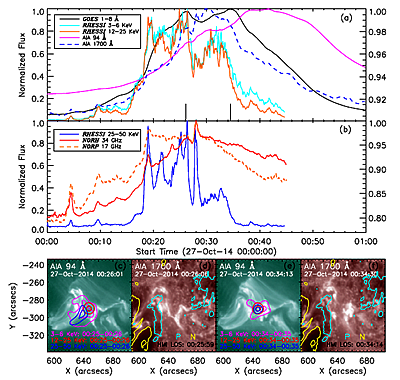Quasi-periodic pulsations (QPPs) are regular phenomena and common features observed in the solar flare emissions. In a typical event, QPP displays as the periodic peaks on the light curve. So far, QPPs in a flare that have periods that change in different channels have rarely been simultaneously observed with different instruments. In this paper, we explore QPPs with changing periods in a solar flare on 2014 October 27, based on the multi-instrument observations. Using the wavelet method and FFT spectra, we derive a period of ~50 s from the thermal emissions during the impulsive phase of the flare, that is, in the soft X-ray bands. At the same time, a period of about 100 s is detected from the nonthermal emissions, such as hard X-ray and microwave channels. The period ratio is exactly 2.0, which might be due to the modulations of the magnetic reconnection rate by the fundamental and harmonic modes of magnetohydrodynamic waves. To our knowledge, this is the first report about period changes from thermal to nonthermal components in a single flare that occur at almost the same time. This new observational finding could be a challenge to the theory of flare QPPs

By with LI Dong
Fig. 1. Upper panel: normalized light curves of the flare on 2014 October 27 from GOES 1??8 Å, RHESSI 3??6 keV and 12??25 keV, SDO/AIA 94 Å and 1700 Å. The vertical ticks indicate the time of two GOES SXR peaks. Middle panel: normalized light curves of the same flare from RHESSI 25??50 keV, NoRP 17 GHz, and NoRH 34 GHz. Lower panels: SDO/AIA images at 94 c, e) and 1700 Å d, f) at two SXR peak times. The X-ray contour levels from the RHESSI images are 95%, 80%, while the HMI contour levels are at _800 G.
The research work by Li Dong et al., has been published in Astronomy & Astrophysics Letters (A&A (2017) 597: 4L.). For more details please see: http://www.aanda.org/10.1051/0004-6361/201629867
